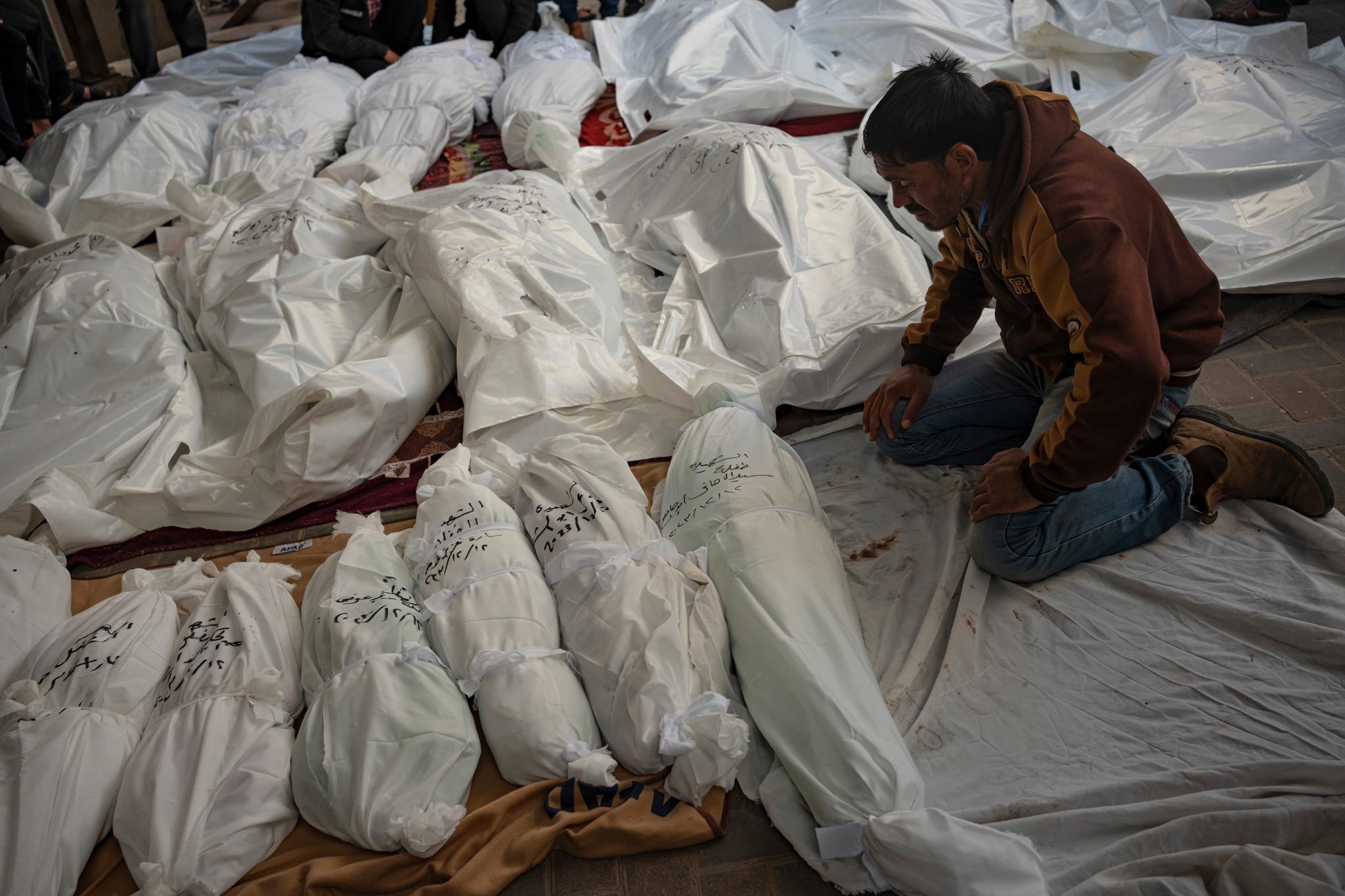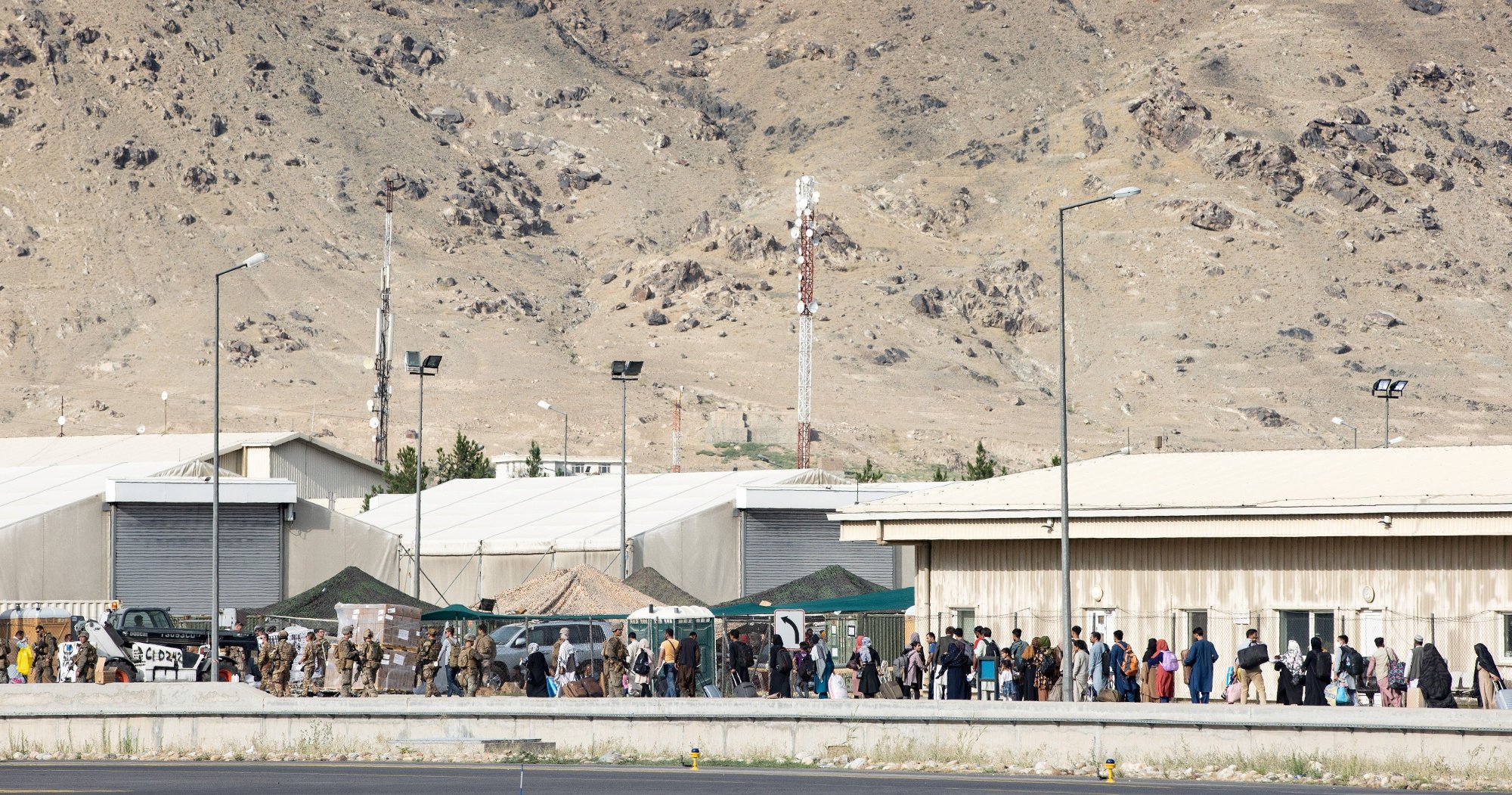At least 18,400 Palestinians were killed in Israeli attacks, according to the Gaza Ministry of Health. Some believe that number is too high. Other experts believe it is too low.
A Palestinian man mourns his relatives who were killed in Rafah in the southern Gaza Strip on December 12. Children and women constitute the majority of the dead.
The death toll in the Gaza Strip shocks the whole world. Every day there are reports of several hundred people killed in Israeli attacks.
According to Gaza health authorities, approximately 8,000 children and more than 5,000 women are among the victims. Several thousand Palestinians are also missing under the rubble of bombed buildings.
Some claim that the casualty figures are exaggerated and call it Hamas propaganda. The United Nations does not agree to this. They believe that the number of people killed in Gaza is much higher than what was announced by the Palestinian authorities.
– Our monitoring indicates that the numbers provided by the Ministry of Health may be an underestimate because they do not include those who were not sent to hospital or who are under the rubble, says a spokesperson for the United Nations High Commissioner for Human Rights.
Disastrous conditions
Other experts share this opinion.
– Nathaniel Raymond says the logical assumption is that the reported numbers are too low. He heads the Human Research Laboratory at the Yale School of Public Health and has worked for more than 20 years on determining death tolls in armed conflicts and natural disasters.
Both the United Nations and relief organizations are now warning of catastrophic conditions in the Gaza Strip, which has been subjected to constant bombardment since the Hamas attack on Israel on October 7.
More than 1.9 million Palestinians, 85% of the population, have been driven from their homes, and many of them now live in what aid workers describe as appalling conditions.
The shortages of food, water and shelter are critical, and it is feared that hunger and disease will kill more people than acts of war.
-
This mass grave in Khan Yunis was covered in November. Photo: Mohamed Dahmane, AP/NTB -
According to health authorities, more than 70% of the more than 18,000 people killed in the Gaza Strip during the past two months were children and women.Photo: Mohamed Dahmane, AP/NTB
Half the population is starving, and nine out of ten do not eat food every day. The needs are enormous, World Food Program Deputy Director Karl Skow said last week.
Six out of ten homes according to United Nations Relief and Works Agency for Refugees (OCHA) It was either completely destroyed or suffered extensive damage, and half of the hospitals and health clinics stopped working.
With 50,000 wounded, those remaining are cramped, but have little or no medicine and equipment.
Impossible to track
Health authorities in Gaza stopped trying to keep a complete list of the dead and wounded several weeks ago.
Many health workers and Ministry of Health employees were killed, Israeli attacks made it very difficult to obtain information on the ground, many antiquities were not inspected, and the communications network and the Internet were often down.
More than 300 health workers were also killed, as were 135 United Nations employees and 56 journalists and photographers.

Another murdered child is carried to the grave in Gaza on December 12. At least 7,700 Palestinian children were killed in Israeli attacks during the past two months.
For the first six weeks of the war, hospitals and morgues sent daily records of the dead and wounded to the Ministry of Health’s collection office at Shifa Hospital in Gaza City.
Hamas controls power in the Gaza Strip. But the Ministry of Health in Gaza is subject to the Palestinian Authority in the West Bank and is headed by Health Minister Mai Al-Kaila in Ramallah in the West Bank.
The ministry’s employees in Gaza come from the secular Fatah movement and Hamas and receive salaries from the authorities in Ramallah.
– Some of us are affiliated with Fatah, and some of us are independent, says the director of Kamal Adwan Hospital in the northern Gaza Strip, Ahmed Al-Kahlot.
“But we are first and foremost professional health care workers,” he adds.
Bodies remain
Data on the dead were initially entered into Excel sheets and sent to the authorities in Ramallah. Gradually registering everyone became increasingly difficult.
One of the four officials working to collect data at Al-Shifa Hospital was killed in an Israeli airstrike. The other three disappeared when Israeli soldiers stormed the hospital, says Omar Hussein Ali from the Ministry of Health in Ramallah.
In many places, transporting the dead to hospitals or morgues was too dangerous, so families buried them in cemeteries in the immediate vicinity.
Elsewhere, ongoing attacks make it impossible to inspect antiquities, and excavators and other equipment are destroyed. So the dead remain.
– The existing information structure is being systematically destroyed, says Omar Hussein Ali on the “Iraq Body Count” website, which was created during the American occupation of Iraq.
His organization tried to track casualty numbers in Gaza, whether by monitoring Ministry of Health data or collecting information from regular media and social media.
Ashraf Al-Qudra was the external voice of the Ministry of Health in Gaza, but was forced to flee Al-Shifa and the South Hospital.
From his new base at Nasser Hospital in Khan Yunis, he continued reporting, but at the end of the week Israeli tanks rolled in there as well.
No evidence
The prestigious medical journal says there is no evidence that the death toll in Gaza is exaggerated The scalpel solid.
Figures from the Ministry of Health in Gaza indicate that they were accurate in previous conflicts, and that the discrepancy between reports from there and independent United Nations analyzes ranges between only 1.5 and 3.8 percent.
After US President Joe Biden in October questioned the reliability of the casualty figures, the authorities in Ramallah published a 212-page report that included names and data on the first 7,000 victims.
The ministry did not distinguish between civilians and combatants and merely said that there were “victims of Israeli aggression.”

The Israeli attacks led to the destruction of large parts of the Gaza Strip. More than 18,000 people were killed, but many thousands were likely also buried under bombed buildings. This photo is from the Al-Zahraa neighborhood on the outskirts of Gaza City on November 30.
Palestinian health authorities have long reliably collected statistics and tracked deaths, and not just in war. Professor Oona Campbell of the London School of Hygiene and Tropical Medicine says the UN trusts them completely.
This was confirmed by Michael Ryan at the World Health Organization.
He says that the numbers may not be completely accurate from one minute to the next, but they largely reflect the number of dead and wounded.
Israeli spokesmen also see no reason to doubt the death toll.
“They’re right to some extent,” a spokesman said when the number of people killed earlier in the month passed 15,000.
Now the number has exceeded 18,400, but everything indicates that the death toll is much higher since the bombs began falling on the Gaza Strip.

“Coffee trailblazer. Certified pop culture lover. Infuriatingly humble gamer.”






